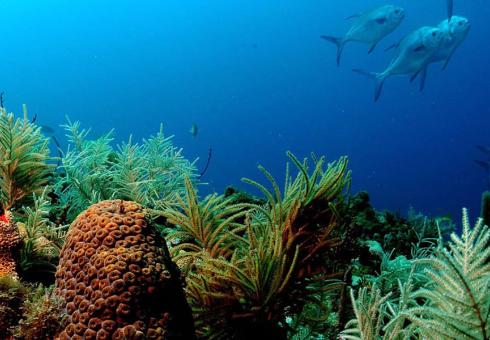Earth Systems
Understanding changes and risks to the interconnected land, ocean, atmosphere and biosphere system
Understanding and predicting the complexity of Earth’s natural changes and variations as well as its responses to human influence requires many disciplines of science working together.
Key components within the Earth system are the atmosphere, cryosphere, land and ocean, each of which involve many interactive processes. Each process is a series of actions—governed by fundamental laws of physics, chemistry, fluid dynamics, geology and biology—that occur to produce a condition (e.g. temperature), movement (e.g. wind) and/or exchange (e.g. evaporation).The Earth system also encompasses natural ecosystems—changes in the oceans, biosphere and global nutrient and carbon cycles—as well as human drivers and dynamics (e.g., emission impacts of migration, industrialization and urbanization).
It is only through the cooperation and collaboration of our researchers and expertise in all areas of these scientific disciplines that our MIT Earth System Model (MESM) can provide credible and reliable insights into the future.
To learn how your organization can benefit from funding our research, please visit the Joint Program Sponsorship page.
Publications
Emmerichs, T., . . . , A. Wong, . . . and P. Guaita (2025)
Biogeosciences, 22 (18), 4823–4849 (doi: 10.5194/bg-22-4823-2025)
Lütjens, B., R. Ferrari, D. Watson-Parris and N. Selin (2025)
Journal of Advances in Modeling Earth Systems, 17(8) (doi: 10.1029/2024MS004619)
Brandolini, F., T.C. Kinnaird, A. Srivastava, S. Costanzo, C. Compostella and S. Turner (2025)
Scientific Reports, 15, 24989 (doi: 10.1038/s41598-025-08396-2)
News + Media
A special issue of the MIT CS3 e-newsletter
Data from neighborhood-level air-quality sensors are needed to enable affected populations to limit air pollution exposure, says MIT CS3 Director Noelle Selin (Fast Company)
MIT CS3 researchers co-author chapter on emissions and concentration scenarios (Springer Cham, Chapter 16, pp. 163-176)
Research Projects
People











